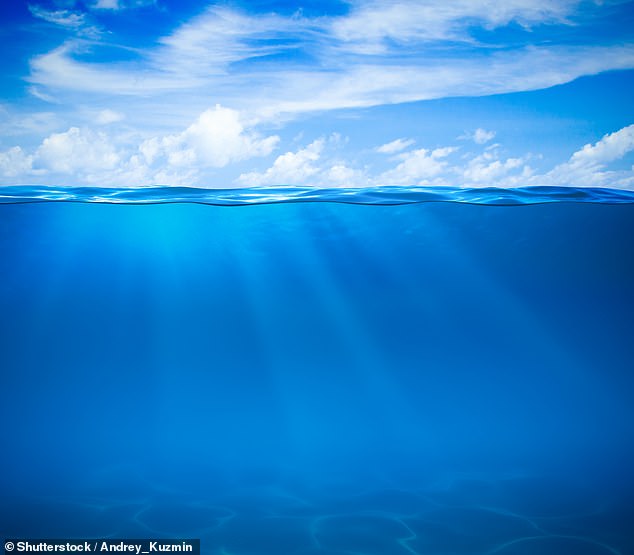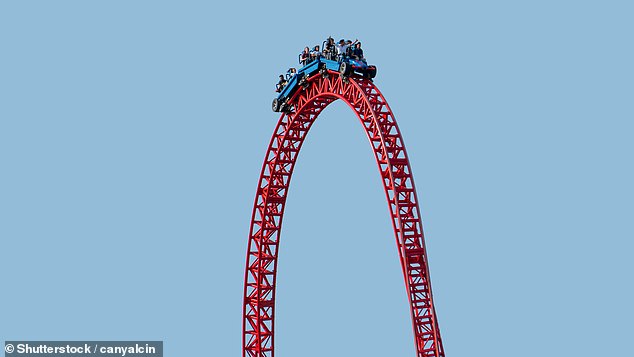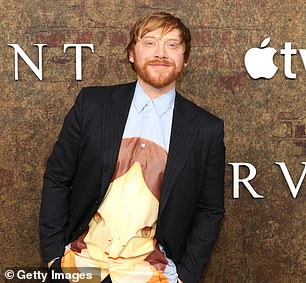Americans’ biggest fears REVEALED: DailyMail graphic details the most common phobias in the US
Most people are afraid of something in life, whether it’s spiders, heights, or flying.
Still, you might be surprised to learn which fears are most common among Americans, according to a new online analysis.
Researchers looked at the number of Google searches for ten different phobias over the course of a month.
According to the data, the most Googled phobia is a little-known fear called trypophobia: being afraid of small holes or bumps clustered together.
Sufferers may rebel against foods like honeycomb and Swiss cheese, and objects like sponges.
The term comes from the Greek words for “hole” and “fear,” but the condition was not first described and named until 2005.
Several celebrities have admitted to suffering from trypophobia, including Sarah Paulson and Kendall Jenner.
Previous studies have shown that the disease is surprisingly common, affecting as many as 17 percent of children and adults, about one in six people, most of whom are women.
Symptoms of trypophobia are similar to those of other phobias and anxiety disorders, including sweating, nausea, shortness of breath, and dry mouth when confronted with the fear.
Still, other studies suggest that the most common fear is in fact public speaking, with a quarter of Americans suffering from this problem. Fear of clowns is also common, affecting about one in fifteen.
It’s possible that the high number of searches for trypophobia is more an indication of the fascination it holds among Americans than of how common it is.

Model Kendall Jenner has said she has an extreme aversion to the sight of small holes arranged in a pattern, known as trypophobia.
The second most common phobia that emerged from data collected by digital company QR Code Generator was agoraphobia: the fear of leaving an environment that is known to be safe, which often leads people to don’t leave home.
Studies estimate that this affects 0.9 to 1.7 percent of the US population.
According to the NIH, people with agoraphobia often become housebound and experience a paralyzing fear of being in crowded places, such as airports, public transportation, and shopping malls.

Zac Efron has said he is afraid of going out – a symptom of agoraphobia
Most cases of agoraphobia develop before the age of 35, with an increased risk during late adolescence and early adulthood.
Actor Zac Efron has said he fears going to crowded places, saying in 2022: ‘I just don’t go out.’ Famous film director Woody Allen is also said to be agoraphobic.
Anti-anxiety medications and antidepressants can help people with agoraphobia.
They are also advised to prioritize relaxation so that they can regain some control when they leave the house, as agoraphobics often fear that they will have a panic attack in public.
Marc Porcar, the CEO of QR Code Generator, said: ‘It is important to recognize that phobias can often have life-changing consequences and significantly impact what a person can and cannot do in everyday life.
“It is encouraging to see people turning to the internet to find support and online resources on overcoming phobias.”
Misophonia was named the third most searched phobia. It causes a severe aversion to chewing, swallowing, and heavy breathing sounds. People with this phobia often describe these sounds as “maddening.”
Most of the time, the sounds that some people find repulsive are not noticeable to others. They can be as innocent as a child’s yawn, falling rain, or the sounds of other restaurant guests.
According to Dr. James Cartreine of Harvard University, ‘It affects some people more than others and can lead to isolation as people with this condition try to avoid these trigger sounds.
‘People with misophonia often feel ashamed and don’t talk about it with healthcare providers – and often healthcare providers have never heard of it anyway.’
He added: ‘Misophonia usually appears around the age of 12 and probably affects more people than we realize.’

People with thalassophobia are afraid of deep water, such as oceans and lakes. People are not particularly afraid of the water, but rather of what lurks beneath the surface
The fourth most common phobia looked for was thalassophobia. The condition is characterized by a fear of large, deep bodies of water, including oceans and lakes.
People are not exactly afraid of water, but rather of what lurks beneath the surface.
People who have had traumatic experiences around oceans or lakes are more likely to develop thalassophobia, although you don’t even have to be near water to experience fear. Just imagining the ocean can make someone sweat.
Emetophobia is the fifth most searched for phobia and is defined as an extreme aversion and disgust to vomiting.
Famous people who say they suffer from this phobia include Bella Ramsey (known from The Last of Us), English singer Franke Bridge and actress Denise Richards.
It’s not just fear of vomit. It is fear of not being able to go to the toilet quickly, fear of being embarrassed, not being able to stop vomiting, or choking on one’s own vomit.

The Last of Us star Bella Ramsey has said she has emetophobia, an extreme disgust and aversion to vomiting
People with emetophobia often suffer from: limit their food intake with an emphasis on ‘safe’ foods, often avoiding common patterns such as avoiding bread for fear of mold, and tolerating fried, fatty foods.
Avoidance extends to alcohol, medications with nausea warnings, and social situations with perceived risk of vomiting.
Daily routines, such as eating quickly or late, are changed, and social and work activities can suffer, impacting career and personal goals. Pregnancy can be avoided due to fear of morning sickness.
The sixth most common fear was claustrophobia: an irrational fear of enclosed spaces such as elevators, closets, tunnels, and cars.
About 12.5 percent of the population has this fear, the majority of whom are women.
Several celebrities, including Ryan Reynolds and Uma Thurman, have spoken out about suffering from claustrophobia.

For someone with a fear of heights, the peak of the roller coaster is extra scary
In seventh place was acrophobia, or fear of heights. Acrophobia can be extremely disorienting, causing a person to have trouble thinking clearly, panic, feel paralyzed, and shake.
Approximately two to six percent of the general population has a fear of heights, with twice as many women affected as men.
Traditionally, actual exposure to heights has been a solution to the phobia, but this can be daunting for anyone living with it.

Rupert Grint has arachnophobia, just like his character in the Harry Potter franchise, Ron Weasley
Arachnophobia, or fear of spiders, ranked eighth, with a search volume of 72,934.
Rupert Grint, who played Ron Weasley in the Harry Potter franchise, suffers from the phobia just like his character in the films.
Ninth place went to hippopotomonstrosesquippedaliophobia, an ironic fear of long words, with a search volume of 69,323. It often extends to the fear of mispronouncing long words when reading aloud.
It can deter a child from reading, especially in the classroom, and cause serious anxiety in an educational setting.
People with this phobia may try to avoid long words, but that is not always possible. For example, they may say “fridge” instead of refrigerator.
The number 10 spot went to thanatophobia, an intense fear of death or dying. This can present as feelings of anxiety or sadness when you think about your death or that of a loved one.
Meanwhile, the least searched for phobia was sociophobia, an anxiety disorder characterized by fear of social situations.
The search volume is very suggestive, but some searches may come from curious Internet users, and not necessarily from people who think they have a specific phobia.
Those who do will likely experience some degree of debilitating effects, such as fear of flying on an airplane or the inability to eat certain foods.
Mr Porcar said: ‘It is important to recognise that phobias can often have life-changing consequences and can have a significant impact on what a person can and cannot do in everyday life. It is encouraging to see people turning to the internet to seek support and online resources to overcome phobias.’
